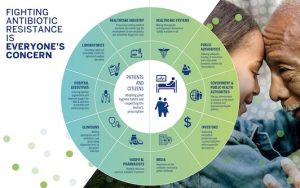Compounding Practices for Medications: Ensuring Patient Safety

According to Health Canada (https://www.canada.ca/en/health-canada/services/drugs-health-products/compliance-enforcement/good-manufacturing-practices/guidance-documents/policy-manufacturing-compounding-drug-products.html), compounding corresponds to the mixing or combination of two or more ingredients (of which at least one is a drug or pharmacologically active ingredient) to create a customized medication for a patient. Compounding may involve raw materials or a variation or reformulation of commercially available products.
For many years, the quality control, quality assurance, and consistency of the compounding process have been controversial. Medication incidents and patient safety events have been reported. The implications of compounding, particularly in times of drug shortages, on patient and medication safety should not be underestimated. In March 2012, the Institute for Safe Medication Practices Canada (ISMP Canada) alerted in their Safety Bulletin “Drug Shortages and Medication Safety Concerns” (https://ismpcanada.ca/wp-content/uploads/ISMPCSB2012-03_Drug_Shortages.pdf) that the potential for errors and mistakes was high if a pharmacy or a facility tries to perform compounding from raw materials or other active ingredients but without the adequate expertise, facilities, equipment, or other supporting resources to ensure the quality, safety, and accuracy of the
final product.
National and Provincial Contribution to Safe Medication Practices
The National Association of Pharmacy Regulatory Authorities (NAPRA) released three Model Standards for Pharmacy Compounding pertaining to (1) Non-Hazardous Sterile Preparations (https://www.napra.ca/publication/model-standards-for-pharmacy-compounding-of-non-hazardous-sterile-preparations); (2) Hazardous Sterile Preparations (https://napra.ca/publication/model-standards-for-pharmacy-compounding-of-hazardous-sterile-preparations); and (3) Non-Sterile Preparations (https://www.napra.ca/publication/model-standards-for-pharmacy-compounding-of-non-sterile-preparations), providing guidance to safe compounding practices. Implementation of the above model standards is under the authority of the respective provincial, territorial, or Canadian Armed Forces pharmacy regulatory authorities, of which each has their own policies and procedures for implementing these standards in their jurisdiction.
Role of Healthcare Professionals in Safe Compounding Practices
In Canada, the compounding of drugs is practiced primarily by pharmacy professionals and is regulated under the jurisdiction of their respective provincial regulatory authorities as mentioned above.
In July 2022, NAPRA released a resource document – Model Compounding Competencies for Pharmacists and Pharmacy Technicians in Canada (https://www.napra.ca/new-napra-document-published-model-compounding-competencies-for-pharmacists-and-pharmacy-technicians-in-canada/) – which defines competencies for compounding pharmacy professionals to ensure safe and quality compounding practices. These competencies are further broken down to align with the above three Model Standards for Pharmacy Compounding of (1) Non-Hazardous Sterile Preparations; (2) Hazardous Sterile Preparations; and (3) Non-Sterile Preparations. In other words, all pharmacy professionals who are involved in compounding are expected to demonstrate the competencies that are defined in the corresponding category of compounding.
Compounding pharmacy professionals should be aware of and adhere to their provincial or territorial regulations of practice. For instance, in Ontario, the Ontario College of Pharmacists (OCP) has adopted the NAPRA’s Model Standards for Compounding, with full implementation for non-hazardous and hazardous sterile preparations (https://www.ocpinfo.com/practice_resource/sterile-compounding) on January 1, 2019, and non-sterile preparations (https://www.ocpinfo.com/practice_resource/compounding) on January 1, 2022.
What can Patients do?
The goal of the above standards and regulations is to advance safe compounding practices and to ensure quality patient care. As the recipient of care and the final compounded preparation, patients should always consider the five questions to ask about their medications (https://www.ismp-canada.org/medrec/5questions.htm) during a clinical encounter with their healthcare providers. Patients should always be well informed of their medications, including compounding preparations.
Anna Nguyen is a 2024 PharmD graduate at the Leslie Dan Faculty of Pharmacy, University of Toronto; and Certina Ho is an Assistant Professor at the Department of Psychiatry and Leslie Dan Faculty of Pharmacy, University of Toronto.







